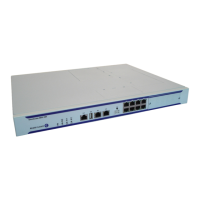Virtual Leased Line Services
7750 SR OS Services Guide Page 139
VLL Endpoint Active Transmit Object Selection Rules
The following pseudocode provides the selection rules for the active transmit object on a VLL
endpoint. These rules achieve the following desired objectives:
1. ICB on “X” endpoint is a backup for the MC-LAG SAP. VLL path active transmit object is
the SAP if it is up and active, or ICB if it is up and did not receive either sdp-binding down
status bits or pseudowire not forwarding status bits.
2. ICB in the “Y” endpoint is a backup for active spoke SDP. VLL path active transmit object is
the spoke SDP which is up and shows remote active. If active spoke SDP goes locally down
or there is no active spoke SDP (for example, all spokes are locally down or showing remote
Standby), we will switch to the ICB spoke SDP provided it is up and did not receive sdp-
binding down status bits or pseudowire not forwarding status bits. Otherwise, the algorithm
selects the best available spoke SDP among those which are not locally down based on the
following priority:
a. Spoke SDP with all received T-LDP status bits clear (0x00000000). This means the remote
spoke SDP is active and both remote SAP and spoke SDP are operationally up.
b. Spoke SDP with received T-LDP status bits indicating remote spoke SDP is in standby
(0x00000020) but both remote SAP and spoke SDP are operationally up.
c. Spoke SDP with received T-LDP status bits indicating remote spoke SDP is active and
remote SAP is down (0x00000006).
d. Spoke SDP with received T-LDP status bits indicating remote spoke SDP is in standby and
remote SAP is down (0x00000026).
e. Spoke SDP with received T-LDP status bits indicating remote spoke SDP is active and in
not forwarding (0x00000001) state.
f. Spoke SDP with received T-LDP status bits indicating remote spoke SDP is in standby and
in not forwarding (0x00000021) state.
g. Spoke SDP with received T-LDP status bits indicating remote spoke SDP is active and is
operationally down (0x00000018).
h. Spoke SDP with received T-LDP status bits indicating remote spoke SDP is in standby and
is operationally down (0x00000038).
i. If multiple objects remain after running steps “a” through “h”, the selected active transmit
object is the one with the lowest local precedence value. If multiple objects remain, the
selected active transmit object is the one with the lowest spoke SDP identifier
j. If an active transmit object is found in steps “a” through “i” but its received T-LDP status
bits indicate values other than active and operationally up (0x00000000) and SAP down
(0x00000006), select ICB spoke SDP. The ICB must be operationally up and did not
receive sdp-binding down status bits or pseudowire not forwarding status bits.
k. If an active transmit object is not found in steps “a” through “i”, select ICB spoke SDP if it
is operationally up and did not receive sdp-binding down status bits or pseudowire not
forwarding status bits.

